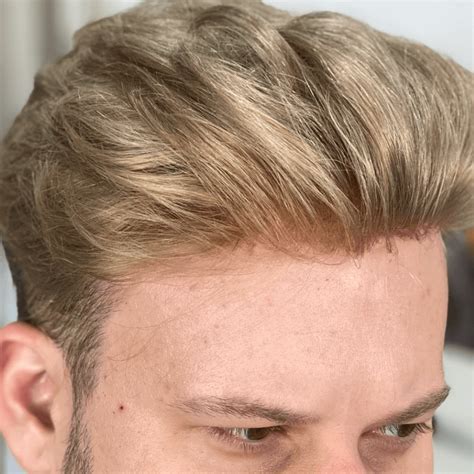Hair loss, affecting millions worldwide, can be a distressing experience that impacts self-esteem and quality of life. Wigs have emerged as a transformative solution, offering a discreet and effective way to conceal hair loss and restore confidence.

Understanding the Causes of Hair Loss
Hair loss can be temporary or permanent, resulting from various factors:
- Genetic: Androgenetic alopecia, also known as male-pattern baldness and female-pattern baldness, is a common genetic condition that causes hair to thin and eventually fall out.
- Medical: Certain medical conditions, such as alopecia areata, autoimmune diseases, and cancer treatments, can lead to hair loss.
- Lifestyle: Poor nutrition, stress, hormonal imbalances, and certain medications can contribute to hair loss.
The Growing Prevalence of Hair Loss
According to the American Academy of Dermatology, approximately 50% of men and women will experience hair loss by the age of 50.
The Emotional Impact of Hair Loss
Hair loss can have a profound emotional impact:
- Low Self-Esteem: It can lead to feelings of insecurity and embarrassment.
- Social Anxiety: Some individuals may avoid social situations due to self-consciousness about their hair loss.
- Psychological Distress: Hair loss can trigger feelings of depression, anxiety, and isolation.
Wigs as a Solution for Hair Loss
Wigs provide a versatile and transformative solution to conceal hair loss and restore confidence. They:
- Offer Instant Coverage: Wigs instantly conceal hair loss, providing a discreet and immediate solution.
- Enhance Appearance: Wigs can create a natural-looking and stylish appearance, boosting self-esteem.
- Reduce Stress: By eliminating the worry about hair loss, wigs can reduce stress and anxiety levels.
Types of Wigs for Hair Loss
There are numerous types of wigs available, catering to different needs and preferences:
Lace Front Wigs: These wigs feature a sheer lace front that seamlessly blends with the hairline, creating a natural-looking appearance.
Glueless Wigs: These wigs, as the name suggests, do not require the use of adhesives, making them more convenient and skin-friendly.
Human Hair Wigs: These wigs are made from 100% human hair, offering a luxurious and realistic appearance.
Synthetic Wigs: These wigs are made from synthetic fibers, providing a more affordable option and offering a wide range of colors and styles.
Pain Points and Motivations for Wig Wearers
Pain Points:
- Unavailability of Affordable Wigs: Many wigs can be expensive, creating a financial burden for individuals experiencing hair loss.
- Finding the Right Fit: Choosing a wig that fits comfortably and securely can be a challenge.
- Maintenance and Care: Wigs require regular care and maintenance to maintain their appearance and lifespan.
Motivations:
- Regaining Confidence: Wigs provide individuals with the confidence to engage in social situations and enhance their self-esteem.
- Improving Quality of Life: By concealing hair loss, wigs help individuals regain a sense of normalcy and live more fulfilling lives.
- Expressing Individuality: Wigs allow wearers to experiment with different styles and colors, expressing their creativity and individuality.
Pros and Cons of Wearing Wigs
Pros:
- Immediate Hair Coverage: Wigs instantly conceal hair loss, providing a quick and effective solution.
- Enhanced Appearance: Wigs create a natural-looking and stylish appearance, boosting self-confidence.
- Discretion and Privacy: Wigs allow individuals to maintain their privacy about their hair loss.
Cons:
- Cost: Wigs can be expensive, especially human hair wigs.
- Maintenance: Wigs require regular care and maintenance, including washing, styling, and repairs.
- Potential for Discomfort: Some wigs may cause discomfort or irritation if not fitted properly.
6 Common FAQs about Wigs for Hair Loss
- How to Choose the Right Wig: Consider factors such as hair type, length, color, and budget.
- How to Maintain a Wig: Wash the wig regularly, style it gently, and store it properly to extend its lifespan.
- How to Apply a Lace Front Wig: Use adhesive or tape to secure the lace front along the hairline for a natural-looking bond.
- How to Style a Wig: Use heat styling tools, hairspray, and other styling products to achieve the desired look.
- How to Avoid Wig Mishaps: Store the wig in a cool, dry place, avoid excessive heat, and secure it properly when windy.
- Where to Find Affordable Wigs: Explore online retailers, wig specialty stores, and hair salons for a range of wigs within various price ranges.
Tables for Understanding Wigs
Table 1: Types of Wigs for Hair Loss
| Wig Type | Features |
|---|---|
| Lace Front Wig | Sheer lace front for natural hairline |
| Glueless Wig | No adhesives required |
| Human Hair Wig | Made from 100% human hair |
| Synthetic Wig | Made from synthetic fibers |
Table 2: Pros and Cons of Wig Styles
| Style | Pros | Cons |
|---|---|---|
| Long Hair | Adds volume and length | Can be heavy and uncomfortable |
| Short Hair | Easy to manage | May not provide enough coverage |
| Natural Hair Wig | Realistic appearance | Expensive |
| Colored Wig | Expresses individuality | Requires more maintenance |
Table 3: Wig Care Maintenance Tips
| Task | Frequency |
|---|---|
| Wash Wig | Every 7-10 wears |
| Style Wig | As needed |
| Store Wig | When not in use |
Table 4: Cost Ranges for Different Wig Types
| Wig Type | Cost Range |
|---|---|
| Synthetic Wig | $50-$150 |
| Human Hair Lace Front Wig | $200-$700 |
| Custom Made Human Hair Wig | $500-$1500 |
Conclusion
Wigs have emerged as a transformative solution for individuals experiencing hair loss. They offer a discreet, convenient, and effective way to conceal hair loss, boost self-esteem, and regain a sense of normalcy. By understanding the causes of hair loss, exploring the different types of wigs, and addressing the pain points and motivations of wig wearers, we can empower individuals to find the best wig solution to meet their needs and restore their confidence.
